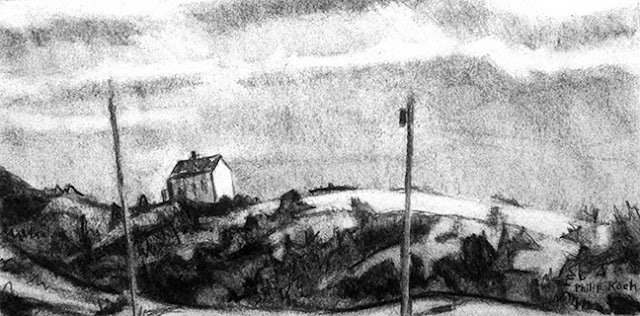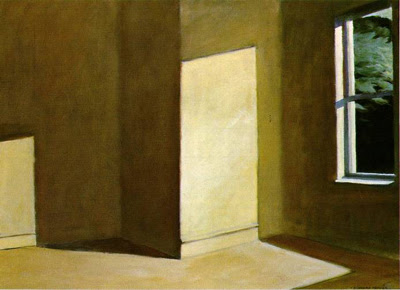Painting in the Green Mountains

There's a long history of American landscape painters heading north up from New York along the Hudson River to the Catskill Mountains, along the coast to Maine, and inland to the Green Mountains of Vermont. Every year I make several trips to the landscape painter's Mecca of New England myself, varying the destination from one place to another. I love it.
Last night I returned from another painting excursion, this time to Vermont. On these trips I soak up the terrain and the region's amazing art history. You can see exactly the same sources as Winslow Homer used or those of the wonderful Hudson River School painters John Kennsett or Sanford Gifford. As you paint a conversation opens up between our 21st century eyes and those of our pioneer 19th century landscape artists. Part of the fun is discovering how much we in 2011 see a little differently than our landscape painting forebearers.
As it's right around the summer solstice the sun comes up incredibly early, forcing me to start to draw at 6 a.m. At that hour the shadows are at their longest and the sense of volume and drama is highest. In this drawing I was shooting to capture the first highlights as they popped out from the enormous shadowed sides of the peaks. An hour later these mostly shadowed mountains would offer almost all highlighted surfaces and the opportunity for clear exciting volumes would degrade quickly.

Here I am working last Saturday on a drawing just outside of Middlebury. As it begins I try to visualize which of the forms are the most critical. The task is to seize the best of the silhouettes nature offers up and translate them into key shapes that will dominate the drawing. So I am standing (this time without one of my trusty easels) and addressing the source straight on. At this stage most of my time is spent looking out at the source.
Very often what happens as I continue drawing is additional forms that weren't in my initial "focus on just the essentials" way of looking start to intrigue my eye. They call out "hey, draw me too." Usually they add surprise and richness of handling the material to the drawing. But inevitably some of the new ideas begin to distract from what the drawing should really be about. The trick is to decide what to keep and what to eliminate.
As the drawing progresses I look less at the source and shift my focus to examining the emerging drawing. At a certain point it can be best to completely ignore everything else and look only at the drawing. This is the time to edit, fine tune and finesse the drawing to its highest state. A fantasy I employ to help me is that I imagine I'm no longer out in the field but instead in a museum looking at my piece already hanging on a clean, white wall. What we want is a drawing that's full of surprises but is visually cohesive. Often times this requires inventing major alterations away from the idea you began the with.
Below is me installing some newly imagined features into the drawing. At this point I've chosen to turn away and ignore the source. The drawing is going to have to stand alone, creating a reality and mood both convincing and compelling.

As fabulous as nature is, it has yet to make a drawing, That's our job. It is up to us to come up with a little special magic to transform a mere description of nature into something that deserves to be called art.


